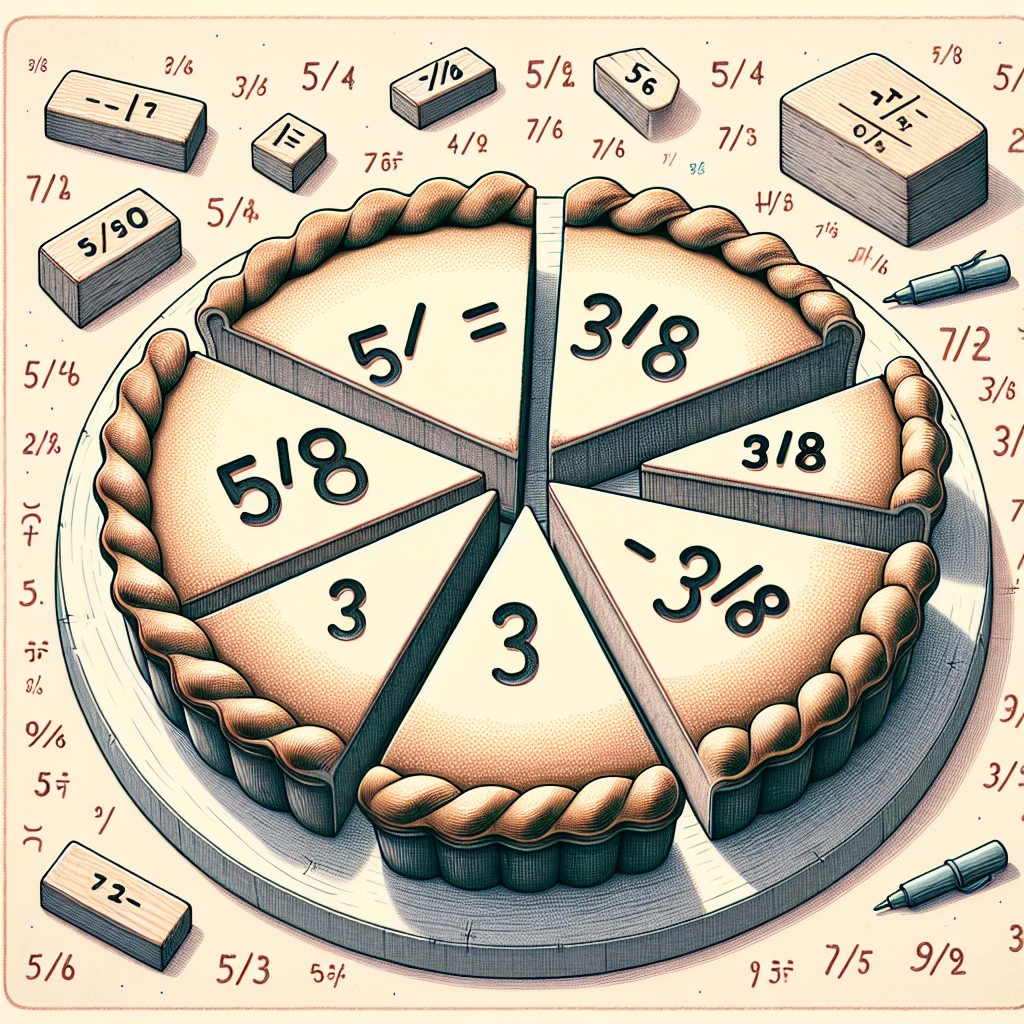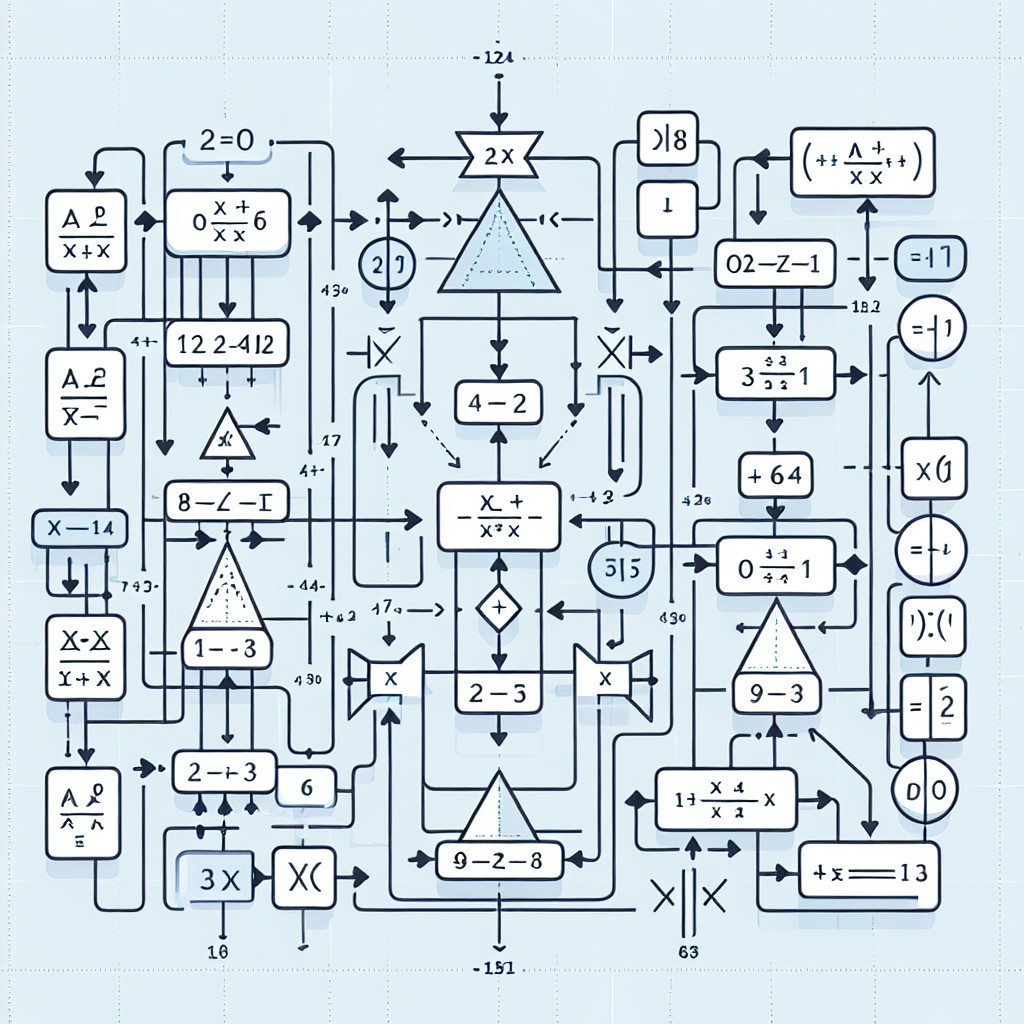Fractions are a fundamental concept in mathematics that represent a part of a whole. They are expressed as a ratio of two numbers, with the numerator representing the number of parts and the denominator representing the total number of equal parts. Multiplying fractions is an essential skill that allows us to calculate the product of two or more fractions. It is an important concept in various fields such as engineering, science, and finance.
Summary
- Multiplying fractions involves multiplying the numerators and denominators separately.
- When multiplying fractions with like denominators, simply multiply the numerators and keep the denominator the same.
- To multiply fractions with unlike denominators, find a common denominator and convert each fraction before multiplying.
- Simplify the multiplication of fractions by cancelling out common factors in the numerators and denominators.
- To multiply mixed numbers, convert them to improper fractions and follow the same steps as multiplying fractions.
Multiplying Fractions with Like Denominators
Like denominators refer to fractions that have the same number in their denominators. When multiplying fractions with like denominators, we simply multiply the numerators together and keep the denominator the same. For example, if we have 2/5 multiplied by 3/5, we multiply 2 by 3 to get 6 as the numerator and keep the denominator as 5. The resulting fraction is 6/5.
Multiplying Fractions with Unlike Denominators
Unlike denominators refer to fractions that have different numbers in their denominators. To multiply fractions with unlike denominators, we need to find a common denominator. This can be done by finding the least common multiple (LCM) of the two denominators. Once we have a common denominator, we can multiply the numerators together and keep the common denominator. For example, if we have 1/3 multiplied by 2/5, we find the LCM of 3 and 5, which is 15. We then multiply 1 by 2 to get 2 as the numerator and keep the denominator as 15. The resulting fraction is 2/15.
Simplifying Multiplication of Fractions
Simplifying multiplication of fractions involves reducing the resulting fraction to its simplest form. This means dividing both the numerator and denominator by their greatest common divisor (GCD). The GCD is the largest number that divides both the numerator and denominator without leaving a remainder. For example, if we have 4/8 multiplied by 2/3, we multiply 4 by 2 to get 8 as the numerator and multiply 8 by 3 to get 24 as the denominator. The resulting fraction is 8/24. To simplify this fraction, we divide both the numerator and denominator by their GCD, which is 8. The simplified fraction is 1/3.
Multiplying Mixed Numbers: A Step-by-Step Guide
Mixed numbers are a combination of a whole number and a fraction. To multiply mixed numbers, we first convert them into improper fractions. This can be done by multiplying the whole number by the denominator and adding the numerator. We then multiply the two improper fractions together using the steps mentioned earlier. Finally, we convert the resulting improper fraction back into a mixed number if necessary. For example, if we have 2 and 1/4 multiplied by 3 and 2/5, we convert both mixed numbers into improper fractions: 2 and 1/4 becomes 9/4 and 3 and 2/5 becomes 17/5. We then multiply these two improper fractions together to get 153/20. If we want to convert this back into a mixed number, we divide the numerator by the denominator: 153 divided by 20 is equal to 7 with a remainder of 13. The resulting mixed number is 7 and 13/20.
Common Errors to Avoid When Multiplying Fractions
When multiplying fractions, there are several common mistakes that students often make. One common error is forgetting to simplify the resulting fraction. It is important to always simplify the fraction to its simplest form to avoid any confusion or inaccuracies in calculations. Another common mistake is mixing up the order of multiplication. It is crucial to multiply the numerators together and the denominators together, rather than multiplying the numerators by the denominators. Additionally, students often forget to convert mixed numbers into improper fractions before multiplying. This can lead to incorrect results if not done properly.
To avoid these errors, it is important to double-check all calculations and simplify fractions whenever possible. It is also helpful to practice multiplying fractions regularly to become more familiar with the process and avoid making mistakes.
Applications of Multiplying Fractions in Real Life
Multiplying fractions has numerous applications in real life. One common example is in cooking and baking, where recipes often require adjusting ingredient quantities based on the number of servings needed. Multiplying fractions allows us to calculate the amount of each ingredient required for a specific number of servings.
Another application is in construction and engineering, where measurements and dimensions often involve fractions. Multiplying fractions allows us to calculate areas, volumes, and other measurements accurately.
In finance and business, multiplying fractions is used in calculating interest rates, discounts, and profit margins. It helps in determining the final cost or value of a product or investment.
Multiplying Fractions in Word Problems
Word problems involving multiplication of fractions can be solved by following a step-by-step approach. First, read the problem carefully and identify the relevant information. Next, determine what operation needs to be performed (in this case, multiplication). Then, convert any mixed numbers into improper fractions if necessary. Multiply the fractions together using the methods discussed earlier. Finally, check your answer and make sure it makes sense in the context of the problem.
For example, consider the following word problem: “Sara baked 3/4 of a cake for a party. She then baked another 2/3 of a cake for a different party. How much cake did Sara bake in total?” To solve this problem, we multiply 3/4 by 2/3. The resulting fraction is 6/12, which simplifies to 1/2. Therefore, Sara baked 1/2 of a cake in total.
Multiplying Fractions with Whole Numbers
Whole numbers are integers that do not have any fractional or decimal parts. When multiplying fractions with whole numbers, we can convert the whole number into a fraction by placing it over 1. We then multiply the fractions together using the methods discussed earlier. For example, if we have 3 multiplied by 2/5, we convert 3 into a fraction by placing it over 1, which gives us 3/1. We then multiply 3/1 by 2/5 to get 6/5.
Advanced Techniques for Multiplying Fractions
Advanced techniques for multiplying fractions involve more complex scenarios and calculations. One such technique is multiplying more than two fractions at a time. To do this, we multiply the numerators together and the denominators together for all the fractions involved. For example, if we have 1/2 multiplied by 2/3 multiplied by 3/4, we multiply the numerators (1 x 2 x 3) to get 6 and multiply the denominators (2 x 3 x 4) to get 24. The resulting fraction is 6/24, which simplifies to 1/4.
Another advanced technique is multiplying fractions with mixed numbers. This involves converting the mixed numbers into improper fractions and then multiplying them together using the methods discussed earlier.
Mastering these advanced techniques is important for tackling more complex mathematical problems and equations that involve multiplying fractions.
Multiplying fractions is a fundamental skill in mathematics that has various applications in real life. Whether it’s in cooking, construction, finance, or solving word problems, understanding how to multiply fractions accurately is crucial. By following step-by-step guides and avoiding common errors, students can become proficient in multiplying fractions. It is important to practice regularly and master advanced techniques to tackle more complex mathematical problems. With a solid understanding of multiplying fractions, students can confidently solve problems and apply their knowledge in various fields.
FAQs
What are fractions?
Fractions are a way of representing a part of a whole. They consist of a numerator (the top number) and a denominator (the bottom number) separated by a line.
What is multiplying fractions?
Multiplying fractions is the process of multiplying the numerators together and the denominators together to get a new fraction.
How do you multiply fractions?
To multiply fractions, you simply multiply the numerators together and the denominators together. Then, simplify the resulting fraction if possible.
What is the rule for multiplying fractions?
The rule for multiplying fractions is to multiply the numerators together and the denominators together.
What is the product of two fractions?
The product of two fractions is a new fraction that represents the result of multiplying the two original fractions together.
Can you simplify the product of two fractions?
Yes, you can simplify the product of two fractions by reducing the resulting fraction to its lowest terms.
What is the easiest way to multiply fractions?
The easiest way to multiply fractions is to simplify them first, then multiply the simplified fractions together.
What is the difference between multiplying fractions and adding fractions?
Multiplying fractions involves multiplying the numerators and denominators together to get a new fraction, while adding fractions involves finding a common denominator and adding the numerators together.

